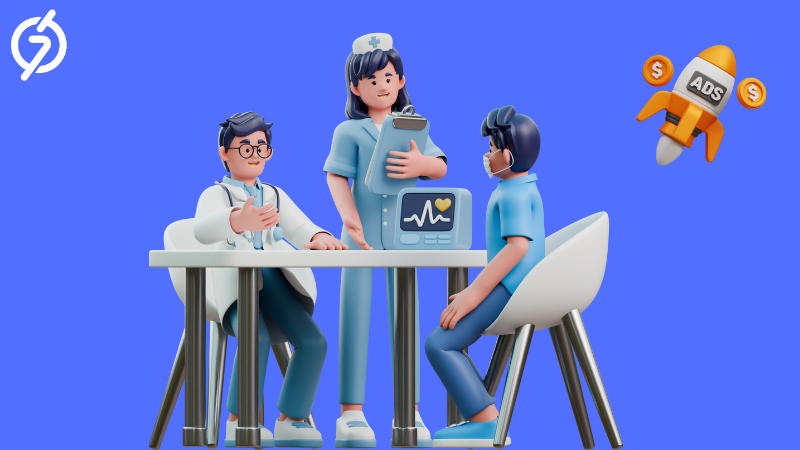Why Modern Healthcare Advertising Works Better Now

Healthcare advertising has always been a tricky space. Regulations are tight, competition is high, and audiences are more skeptical than ever. Yet, in recent years, modern healthcare advertisement strategies have started performing better, not by shouting louder, but by speaking smarter. The change isn’t magic. It’s a mix of better tools, deeper audience understanding, and approaches that feel more human.

Pain Point
For years, healthcare ads followed a predictable pattern — clinical terms, stock images of smiling patients, and generic “we care” messages. The problem? Patients and healthcare consumers grew immune to them. The market shifted, but many campaigns didn’t.
Two things made this even harder:
A crowded digital landscape — Social platforms, search engines, and display networks are flooded with content. Healthcare brands were competing not just with each other, but with every other industry.
A trust gap — People are careful with health-related information. Overpromising, using overly complex medical jargon, or sounding too much like a sales pitch quickly turns audiences away.
When ads miss the emotional mark or feel disconnected from real patient needs, they don’t just underperform — they risk damaging trust.
Personal Insight from the Field
In observing healthcare advertisement trends, one shift stood out: the most successful campaigns stopped talking “at” people and started talking “with” them.
I once saw a mid-sized healthcare provider overhaul its advertising. Before, they were running banner ads with phrases like “Your Trusted Medical Partner”. It looked fine on paper, but click-through rates were low. Then, they changed their approach — using patient-focused stories, clearer calls to action, and formats that fit naturally into where people were already spending time online.
They also tested smaller, more targeted campaigns on niche platforms instead of blasting the same message everywhere. Within three months, engagement doubled, and appointment bookings from online ads increased by nearly 40%.
The lesson? In healthcare marketing, precision and empathy outperform volume.
Soft Solution Hint
Modern healthcare ads succeed because they combine data-driven targeting with human-centered messaging. Here’s how the strongest campaigns are doing it:
Using simpler language
Healthcare topics are naturally complex. But modern ads strip away excess jargon. They speak in plain terms, focusing on benefits that the audience can immediately understand.
Personalizing the message
Instead of running one generic ad, advertisers now tailor creative for different audience segments — caregivers, patients, or even location-based groups.
Mixing formats for reach
Search ads catch active intent (“I need a clinic near me”), while native ads introduce services to people before they start searching. This layered approach builds awareness and trust together.
Testing before scaling
Rather than spending a large budget upfront, marketers test small campaigns first. If an ad resonates, they expand. This reduces wasted spend and increases ROI. You can even get started with a test campaign to see how your healthcare offer performs on a smaller, more controlled scale.
Focusing on trust signals
Modern ads often include reviews, certifications, or safety standards. These small trust boosters help reduce hesitation, especially when making healthcare decisions.
Why This Works Better Today
The online ad ecosystem has matured. Platforms can now target with incredible accuracy, down to patient interests, local demographics, and even behavioral patterns. But targeting alone isn’t enough.
When a healthcare ad shows up at the right time and speaks in a tone that feels relatable, it gets noticed. That’s why the best-performing campaigns today are built on a balance of smart targeting and human connection.
A Word on Ethics
Modern healthcare advertisement methods also lean heavily on ethical marketing. This isn’t just about compliance — it’s about sustaining long-term trust. Ads must be truthful, avoid exaggeration, and respect patient privacy. These boundaries not only protect brands legally but also make them more believable to the audience.
Practical Takeaway
If you’re looking to improve healthcare advertising results, start with these questions:
Does my ad speak in plain, patient-friendly language?
Am I targeting the right audience with the right message?
Have I tested my creative and formats before scaling?
Am I giving enough proof for people to trust me?
Small, consistent improvements in these areas often lead to big performance gains over time.
Conclusion
Modern healthcare advertising isn’t about creating louder messages — it’s about creating messages people want to hear and believe. By simplifying communication, personalizing outreach, and building trust into every ad, healthcare brands can break through the noise and connect with the people who need them most.
- Vibnix Blog
- Politics
- News
- Liberia News
- Entertainment
- Technology
- التعليم
- Art
- Causes
- Crafts
- Dance
- Drinks
- Film
- Fitness
- Food
- الألعاب
- Gardening
- Health
- الرئيسية
- Literature
- Music
- Networking
- أخرى
- Party
- Religion
- Shopping
- Sports
- Theater
- Wellness



